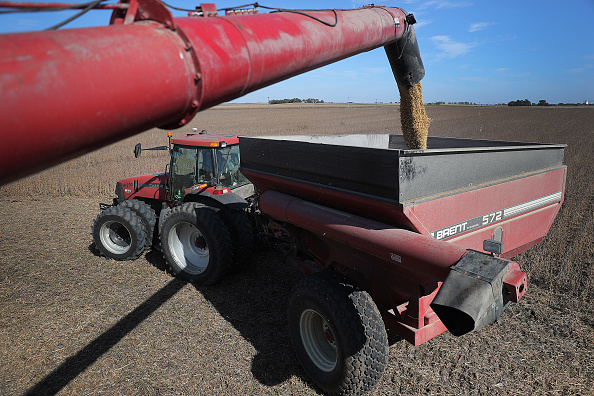A long time ago, in a field far, far away, a farmer earned a premium for the higher quality grain found to be growing in the center of his field.
It’s not science fiction…It’s not a pipe dream…And it’s not far off.
Space-age sensors: Researchers at Kansas State teamed up with John Deere to analyze data in what could prove to be a “Mecca” in ag technology—remotely sensing grain protein concentration (GPC).
The goal? Give farmers a powerful crop management tool. And…provide an opportunity to selectively harvest and market grain based on quality. Whoa.
Soundbite: Noting that this is an “emerging area of research,” K-State agronomist Ignacio Ciampitti said, “Field crop quality differentiation is becoming important to understand, and can increase the competitiveness of U.S. crops.”
The deets: Researchers analyzed a variety of sensors used to determine GPC—both during the growing season and at harvest.
On-combine harvest sensors proved to be more accurate, but remote sensor data was nothing to shake a stick at, providing a valuable GIS tool for making in-season crop management decisions.
The end-vision for farmers? Segregated harvest and targeted marketing—sell the higher quality grain at higher prices, then go back and harvest the rest.
And there’s significant interest among producers. According to researchers, over 55% of soybean farmers surveyed noted that they would invest in the new tech if they could earn a 50¢ premium per bushel.
Where this goes: The kinks are being worked out, but as Ciampitti noted, “on-combine sensors may quickly become the gold standard for predicting in-season grain protein concentration.”

